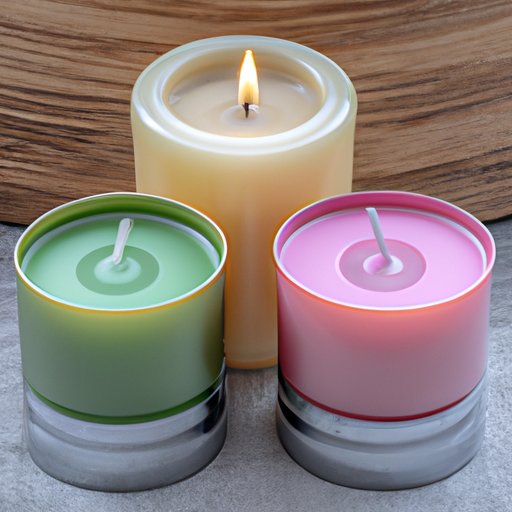Introduction
Candles are a popular way to add ambience and aromas to a room. From romantic dinners to religious ceremonies to holiday celebrations, candles are often used in a variety of settings. But while candles may give off a pleasant glow and smell, they can also be bad for your health. In this article, we’ll take a look at the health risks associated with burning candles and explain why it’s important to use them safely and sparingly.
Health Risks of Burning Candles
Burning candles can pose several health risks, including exposure to toxic chemicals, fire safety concerns, and air pollution. Let’s take a look at each of these risks in more detail.
Toxic Chemicals in Candle Wax
Most candles are made from paraffin wax, which is derived from petroleum. When burned, paraffin wax releases toxins such as toluene and benzene. These toxins can cause eye, nose, and throat irritation; headaches; nausea; and dizziness. In addition, some studies suggest that long-term exposure to these toxins may increase the risk of cancer.
Fire Safety Concerns with Candles
Candles present a fire hazard if not used properly. Unattended candles can easily catch nearby objects on fire, and hot wax can cause severe burns. It’s important to keep candles away from flammable materials, supervise them when they are lit, and extinguish them before leaving the room.

Air Pollution Caused by Candles
When candles burn, they emit smoke and soot into the air. This smoke contains tiny particles of carbon, which can be inhaled and accumulate in the lungs. Long-term exposure to these particles has been linked to a number of respiratory illnesses, including asthma, bronchitis, and emphysema.
Carbon Monoxide and Soot
In addition to releasing tiny particles of carbon, burning candles also release carbon monoxide. This colorless, odorless gas can build up in enclosed spaces and lead to dizziness, headaches, and even death. The soot released by candles can also cause discoloration of walls and furniture.
Volatile Organic Compounds
Many candles contain volatile organic compounds (VOCs), which are released into the air when the candle is burned. VOCs can cause a variety of health problems, including eye and respiratory irritation, headaches, dizziness, and fatigue.

Allergies and Asthma Triggered by Candles
Many people are sensitive to the smoke and scents released by burning candles. Inhaling smoke or fragrances can trigger asthma attacks and allergic reactions in some individuals. It’s important to be aware of any allergies or sensitivities before lighting candles.
Fragranced Candles
Fragranced candles can be particularly irritating to those with allergies or asthma. Many fragrances are made from synthetic chemicals, which can trigger an allergic reaction or make symptoms worse. Fragranced candles should be avoided by those with allergies or asthma.
Paraffin Wax
Paraffin wax is the most common type of wax used in candles. However, it can also be a source of allergens. Paraffin wax is often made from petroleum derivatives, which can cause skin irritation and breathing difficulties.

Negative Effects of Scented Candles
Scented candles are popular, but they can also be bad for your health. Many scented candles contain synthetic scents, which can irritate the eyes, nose, and throat. They may also contain artificial dyes, which can cause skin irritation and other health problems.
Synthetic Scents
Synthetic scents are made from chemical compounds, which can be harmful when inhaled. Some of these compounds can irritate the eyes, nose, and throat, while others can trigger allergic reactions or worsen asthma symptoms.
Artificial Dyes
Artificial dyes are often added to scented candles to make them more visually appealing. However, some of these dyes can be toxic when inhaled. In addition, artificial dyes can cause skin irritation and other health problems.
Conclusion
Burning candles can have serious health implications if not used safely and responsibly. Toxic chemicals, air pollution, and allergens released from burning candles can all pose a risk to your health. To minimize these risks, it’s important to use candles sparingly and choose unscented, natural candles whenever possible.


